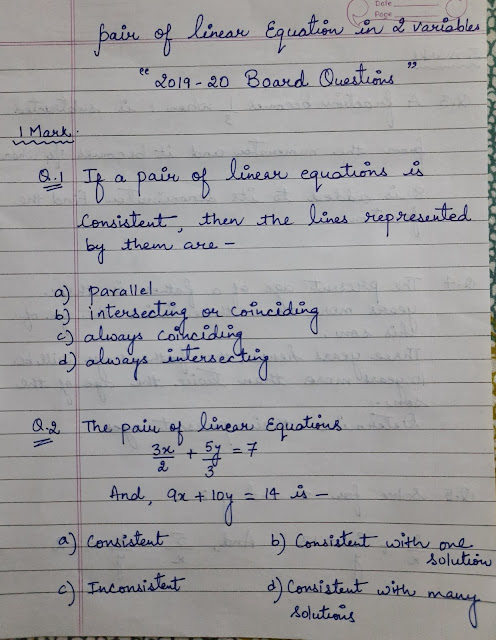Saturday 30 June 2018
Friday 29 June 2018
class 9 / worksheet / 29-june-2018
ARMY PUBLIC SCHOOL, GOLCONDA
Class 9 – Physics - Ch 8 – Motion
(WORKSHEET - 5)
Subtopic –
1.) GRAPHICAL REPRESENTATION OF MOTION-
VELOCITY-TIME GRAPH
velocity - time graph (v - t graph)
|
(i) The velocity-time graph for a body travelling with uniform velocity is a straight line parallel to the time axis, as shown in figure 4.4 (a).
|
(ii) For a body starting from rest and moving with uniform positive acceleration, the v - t graph is as shown in figure 4.4 (b)
|
(iii) For a body starting with an initial velocity arid moving with a uniform positive acceleration, the v - t graph is as shown in figure 4.4 (c).
|
(iv) For a body moving with uniform negative acceleration, the v - t graph is as shown in figure 4.4 (d).
|
(v) For a body moving with increasing acceleration, the v-t graph is as shown in figure 4.4 (e).
|
(vi) For a body moving with decreasing acceleration, the v-t graph is as shown in figure 4.4 (f).
|
(vii) When a body thrown vertically upwards moves under gravity, the v - t graph is as shown in Fig. 4.3 (g).
|
The area enclosed by the velocity - time graph and the time axis for a time interval represents the displacement of the body during that time interval. The slope of the graph at any instant of time gives the acceleration of the body at that instant of time.
|
Q & A’s
1. Draw velocity-time graph for-
(a) A body moving with uniform velocity
(b) A body moving with uniform acceleration (positive)
(c) A body moving with non-uniform acceleration (positive)
(d) A body moving with uniform acceleration (negative)
(e) A body moving with non-uniform acceleration (negative)
(f) A body thrown up and then falling freely
(g) A body is at rest.
2. What can you say about the motion of an object if its speed-time graph is a straight line parallel to time axis?
3. Draw velocity-time graph and show that its slope gives acceleration.
4. What is the quantity which is measured by area occupied below the velocity-time graph?
5. Draw velocity-time graph and show that area under it gives distance traveled by the body in the given time interval..
6. Study the given graph and answer the following questions:
(a) Which part of graph is showing acceleration?
(b) Which part of graph shows retarded motion?
(c) Which part of graph shows uniform motion?
7. An object is moving along a straight line with uniform acceleration. The following gives data of velocity at various time intervals.
Time (s)
|
0
|
1
|
2
|
3
|
4
|
5
|
6
|
Velocity (m/s)
|
4
|
8
|
12
|
16
|
20
|
24
|
28
|
Plot velocity-time graph. From graph-
(a) Velocity of object at 4 s.
(b) Calculate acceleration of the object.
(c) Calculate distance traveled by object in first 2 s.
8. The following graph is velocity time graph-
Find-
(a) Velocity of body at C.
(b) Acceleration on body between A to B.
(c) Acceleration on body between B to C.
(d) Acceleration on body between C to D.
(e) Distance travelled by object.
(f) Average velocity of object.
9. A driver of a car travelling at 52 km/hr applies breaks and accelerates uniformly in tte opposite direction. The car stops in 5 s. another driver going at 3 km/hr in another car applies breaks slowly and stops in 10 s. on the same graph paper plot speed-time graph for the two cars. Which of the two cars traveled farther after the breaks were applied?
10. Study the given speed-time graph of a car and answer the following questions:
(a) Find how far does the car travel in the first 4 s? shade the area on the graph that represents the distance traveled by the car during the travel.
(b) Which part of the graph represents uniform motion of the car?
Subscribe to:
Posts (Atom)
-
CONCEPT MAP POINTS TO REMEMBER 1. If a ray stands on a line, then the sum of the two adjacent angles so formed is 180° and vice- ...



















